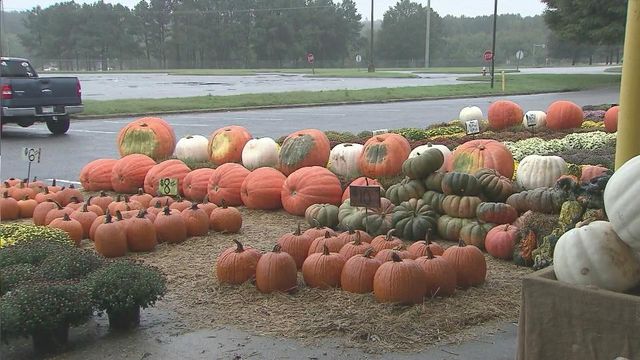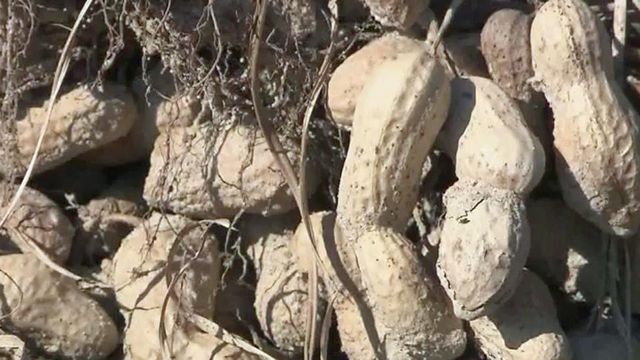Danger to trees and crops increases as rain continues to fall
Nine days of measurable rainfall left the ground saturated across the state of North Carolina.
Posted — UpdatedAgriculture Commissioner Steve Troxler said the peanut crop alone had suffered about $9 million in damage.
He identified three climactic conditions that peanut farmers dread.
North Carolina is among the nation's top 10 peanut producers.
"This is our money-making time," said Tara Bynum. "This is our bread and butter. This makes or breaks the year for us. It really does."
Although the weather pattern moves the bulk of the rain to the south and west Saturday, WRAL Chief Meteorologist Greg Fishel still forecast light rain and drizzle.
"We'll see far less rain in the Triangle Saturday than Friday," he said.
But that doesn't mean the weather danger has passed.
In an update for the media Friday afternoon, Gov. Pat McCrory warned of the risk of trees toppled by wind where the ground has given way.
Representatives from the state departments of Public Safety, Transportation, Health and Human Services and Agriculture, as well as the Office of Emergency Medical Services, the N.C. National Guard, the State Highway Patrol, Swift Water Rescue teams and private sector partners gathered Friday at the Raleigh Joint Information Center to work around the clock to gather and disseminate information as the storm moves through the state.
In the Sandhills, the concerns were similar.
"Our biggest concern right now is the rain with the ground already saturated," said Tim Mitchell, with Cumberland County's Emergency Management Service. "The winds are staying fairly calm right now, but if we do get some gust of wind, we're concerned about possibly trees coming down over the weekend."
Most of North Carolina's counties are under a wind advisory until Sunday morning. Winds of 10 to 20 mph are possible, and gusts could as high as 35 mph, according to the National Weather Service.
Along the Outer Banks, N.C. Highway 12 was closed due to sound-side flooding Friday night. Whitecaps rolled and red flags flapped on empty beaches as Hurricane Joaquin churned offshore.
In Brunswick County, the Carolina Shores and Calabash communities were both evacuated late Friday night due to rain.
Almost 500 vehicles and more than 1,000 people were escorted off Ocracoke Island Friday after the governor ordered a mandatory evacuation. Ferry service to the island is suspended until Saturday morning. At that time, only residents, property owners, emergency personnel and utility crews will be allowed.
On Sunday, the upper-level low cycles back into central North Carolina, Fishel said, bringing another round of rain.
"Sunday starts quiet, but then we will see some rain resurgence from the south Sunday night into Monday," he said.
The record for consecutive days of measurable rainfall in Raleigh is 12. The capital city would tie that mark on Monday.
• Credits
Copyright 2024 by Capitol Broadcasting Company. All rights reserved. This material may not be published, broadcast, rewritten or redistributed.






